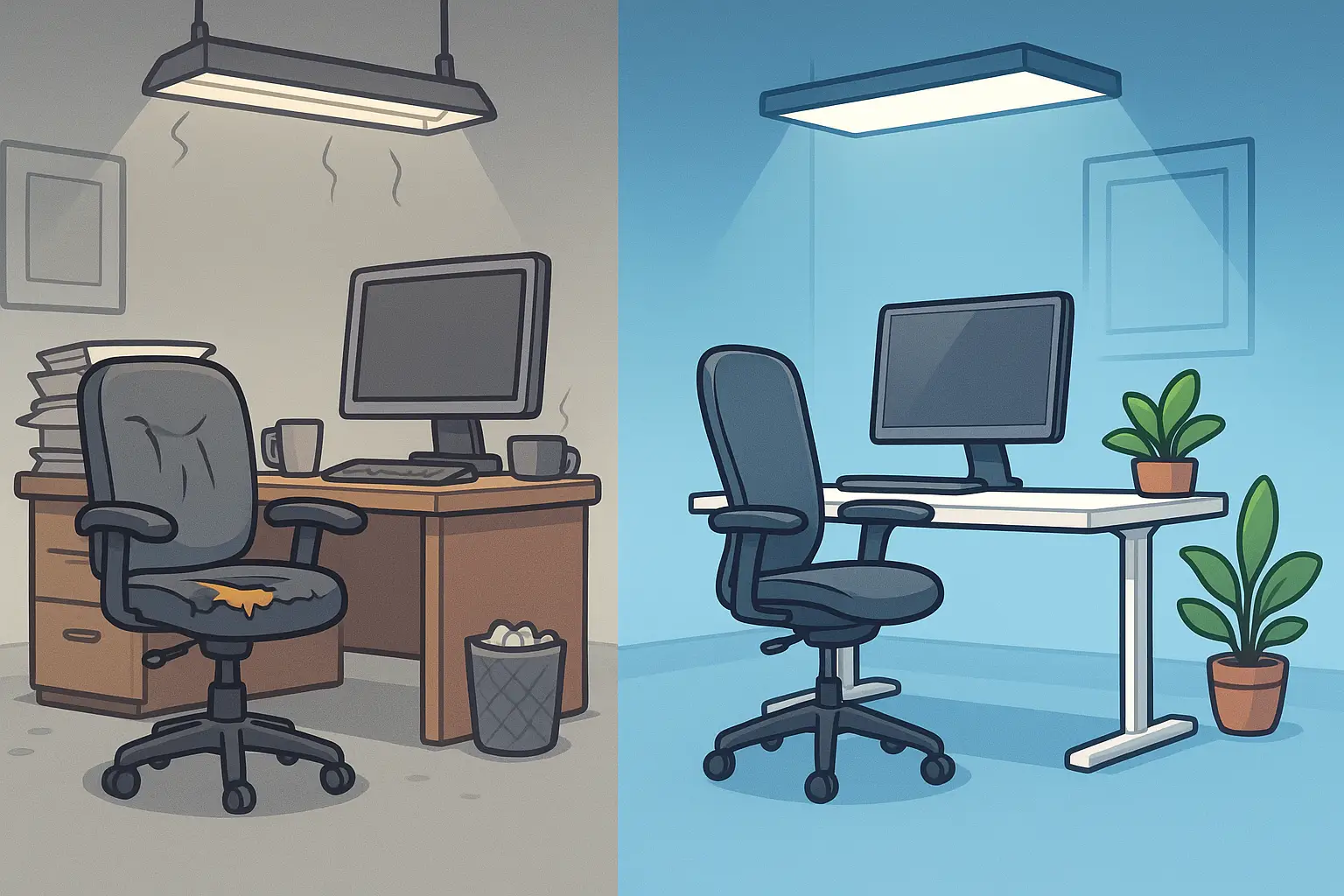
The way we work has changed — and so must the environments we create. As hybrid working continues to redefine the modern office, companies are moving away from fixed layouts toward adaptable, people-centred spaces. The future of the workplace isn’t about desks per person; it’s about giving employees choice, flexibility, and comfort.
At Sapphire Business Interiors, we’ve seen first-hand how smart furniture planning and agile design can transform hybrid offices — creating spaces that respond to daily change without losing identity or performance.
The traditional office layout — static desks in rows — no longer fits the rhythm of hybrid work. Teams flow between home, office, and third spaces, so interiors need to adapt just as easily.
Modular furniture systems are at the heart of this shift. Configurable desks, mobile tables, and stackable soft seating let teams reshape their environment on demand — from a quiet project zone in the morning to an open collaboration area by afternoon.
At Sapphire, we’ve implemented modular systems in workplaces across the UK, allowing clients to future-proof their layouts without costly refits. These solutions reduce waste and support long-term flexibility, making them both sustainable and economically smart.
(Consider inserting an image of a Sapphire installation showing modular tables or seating configurations.)
Hybrid work has created a new challenge: how to provide privacy and focus in open, flexible environments. The answer lies in acoustic pods and micro-environments — self-contained spaces for calls, video meetings, or quiet concentration.
Pods and booths have evolved into beautifully designed, plug-and-play solutions that can be installed in hours and relocated as needs change. They offer excellent acoustic performance, ventilation, and integrated power — ideal for hybrid offices balancing energy and privacy.
Our recent installations of Framery and Nowy Styl pods have enabled clients to introduce privacy zones without structural changes — giving their teams instant flexibility while maintaining design harmony.
(Insert photo of acoustic pods in a Sapphire project or a clean render of meeting booths.)
One of the main reasons people come to the office is to connect — to collaborate, share ideas, and strengthen relationships. Furniture plays a central role in shaping those interactions.
We’re seeing a strong move toward multi-purpose collaboration zones: relaxed lounges, adaptable meeting tables, and stand-up discussion points that encourage movement and creativity.
Designing for collaboration isn’t just about adding sofas and whiteboards — it’s about creating intentional settingswhere people naturally engage. Materials, lighting, and furniture layout all contribute to how teams behave.
At Sapphire, we work with clients to balance these social spaces with the quiet zones and individual focus areas that remain essential for productivity.
Hybrid doesn’t mean open-plan chaos. Many professionals still need focused, distraction-free environments for deep work.
That’s why successful hybrid offices blend zones for concentration — using furniture with built-in acoustic panels, high-backed seating, and dividers that provide psychological comfort without isolating people.
Reconfigurable benching systems and screens allow layouts to evolve while still offering individuals the privacy they need.
The most effective workplaces create a rhythm of zones — collaborative, semi-private, and silent — all clearly defined through furniture and flow.
(Include a render or project image showing zoning with different furniture styles.)
Future-proof design isn’t only about flexibility; it’s also about responsibility. Choosing reconfigurable, high-quality furniture reduces environmental impact by extending product life and minimising waste.
At Sapphire, we prioritise sustainable solutions — specifying products made from recycled materials, designing layouts that can evolve, and helping clients reuse and reupholster existing pieces during refresh projects.
A hybrid workplace designed with longevity in mind supports not just people, but the planet too.
Our hybrid design strategy is built on three key pillars:
Flexibility: Furniture layouts that can change as fast as your teams do.
Sustainability: Smart reuse and reconfiguration that minimise waste.
Longevity: Durable products and materials designed to last.
From initial planning and product sourcing to installation and ongoing Day-2 support, Sapphire ensures every workspace we deliver is equipped to evolve.
(Insert a photo collage of Sapphire installations showing different types of hybrid setups.)
The modern workplace is a living ecosystem — constantly adapting to people, purpose, and technology.
By investing in flexible, reconfigurable furniture now, businesses can stay ahead of change, support employee wellbeing, and strengthen their culture.
At Sapphire Business Interiors, we help clients design hybrid offices that work today — and tomorrow.
Book a consultation to explore hybrid furniture strategies and discover how we can help you design spaces that adapt beautifully to your team’s needs.
CALL US TO START CREATING YOUR DREAM Office